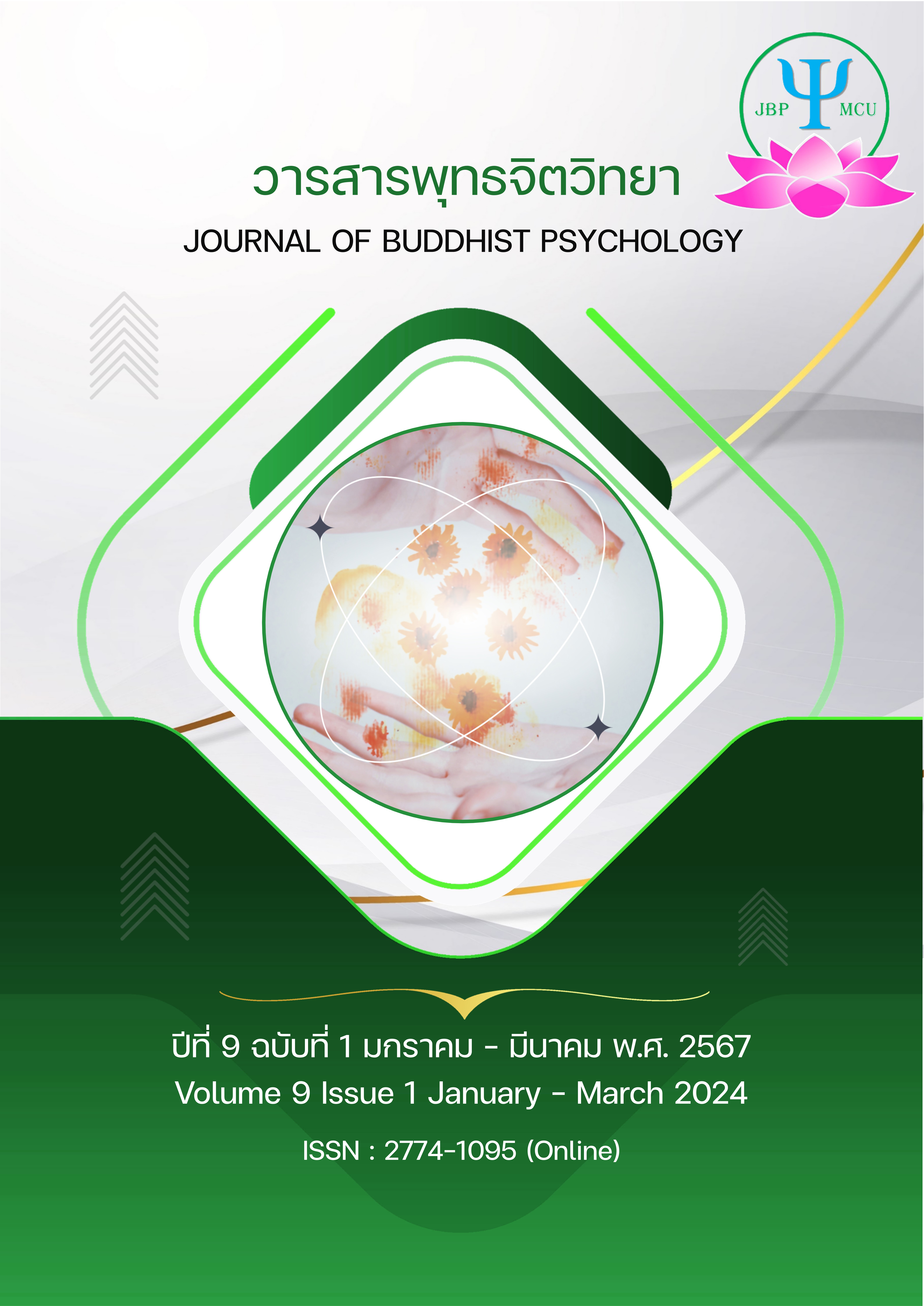Development of an English Curriculum of Creative Thinkink Based on Content and Language Integrated Learning by Using Steam 4 Innovator Process at Witthayapanya Matthayom School, Bangkok
Main Article Content
Abstract
The objectives of this research were 1) study the state of problem 2) creative thinking 3) study to English learning and 4) and to study Matthayom School students' satisfaction of the curriculum. The samples for this research were Witthayapanya Matthayom School 3 students of 2022 academic year. The instruments used in this research were 1) English Curriculum 2) a learning achievements test 3) evaluation form for measuring creativity of 4 assessed measurements including: (1) fluency, (2) flexibility, (3)originality, and (4) elaboration. The statistics employed were percentage, the mean, standard deviation and t-test (dependent samples). The efficiency of the curriculum was carried out by E1/E2.
The results showed that: (1) The study of the problems of Development of the English Curriculum of Creative Thinking Based Curriculum revealed that the propriety, on the whole, problem was at a high level (=3.72) and the propriety, on the whole, need for development was at a high level (
=4.20) (2) Development of the English for Community-Based Curriculum had 12 main components: Importance and necessity of the curriculum, principles of the model, Purposes Learning outcomes, Learning substances, Cours description, Content structure and time allotted, Time allotted, Structure of the course, guidelines for organizing activities, Media, equipment and learning sources, and Guidelines for measurement and evaluation of 6 learning units including 36 lesson plans learning; according to the guidelines by the experts, revealed that the propriety, on the whole, was at the very high at the average (
=4.51) The study on the results of using the English Curriculum revealed that: 1) the efficiency was 79.08/78.67; lesson plans learning at the high level (
=3.74) (3) The learning achievement of the students who were taught according to the develop English Curriculum was higher than before being taught at a statistical significance level of .01 and The creative thinking ability in the learning area after being exposed, was at a very good level. and (4) the students’ satisfaction, on the whole, was at the very high at the average (
=4.55).
Article Details

This work is licensed under a Creative Commons Attribution-NonCommercial-NoDerivatives 4.0 International License.
References
กระทรวงศึกษาธิการ. (2560). หลักสูตรกลุ่มสาระการเรียนรู้ภาษาต่างประเทศ. กรุงเทพฯ: ชุมนุมสหกรณ์การเกษตรแห่งประเทศไทย.
ทิวาวรรณ คล้ายคลึง. (2562). การพัฒนาหลักสูตรท้องถิ่น เรื่อง ขนมพื้นบ้าน อำเภอกงไกรลาศ สำหรับนักเรียนชั้นประถมศึกษาปีที่ 4-6 (วิทยานิพนธ์ปริญญามหาบัณฑิต). มหาวิทยาลัยราชภัฏอุตรดิตถ์.
นพดล กองศิลป์. (2561). การพัฒนาหลักสูตรประถมศึกษาเพื่อการเรียนรู้สู่สากลตามแนวทาง STEAM.วารสารวิชาการอุตสาหกรรมการศึกษา, 12(2), 46-57.
วิชัย วงษ์ใหญ่ และมารุต พัฒผล. (2557). กระบวนทัศน์ใหม่ การ Mentor and Coaching ในสังคมสื่อสารสนเทศ เพื่อเสริมสร้างศักยภาพนักศึกษาฝึกประสบการณ์วิชาชีพครู. กรุงเทพฯ: บัณฑิตวิทยาลัยมหาวิทยาลัยศรีนครินทรวิโรฒ.
สิทธิพล อาจอินทร์. (2561). การพัฒนาหลักสูตร (พิมพ์ครั้งที่ 4). ขอนแก่น: มหาวิทยาลัยขอนแก่น.
สถาบันทดสอบทางการศึกษาแห่งชาติ. (2565). รายงานผลการทดสอบทางการศึกษาระดับชาติขั้นพื้นฐาน (O-NET) ปีการศึกษา 2565. สืบค้นเมื่อ 22 มิถุนายน 2566, จาก http://www.newonetresult. niets.or.th/Announ cement Web/Login.aspx
สุภัค โอฬาพิริยกุล.(2562). STEAM EDUCATION: นวัตกรรมการศึกษาบูรณาการสู่การจัดการเรียนรู้ STEAM EDUCATION: Innovative Education Integrated into Learning Management. วารสารวิจัยและพัฒนาหลักสูตร, 9(1), 1-16.
สิราวรรณ จรัสรวีวัฒน์.(2560).การจัดการเรียนรู้แบบบูรณาการในยุคประเทศไทย 4.0 ตามแนวคิด STEM, STEAM และ STREAM.วารสารการศึกษาและพัฒนาสังคม, 8(1), 19-30.
ออมสิน จตุพร. (2560). การพัฒนาหลักสูตรประวัติศาสตร์ท้องถิ่นตามแนวคิดการศึกษาอิงถิ่นฐานสำหรับนักเรียนระดับประถมศึกษาศึกษา: กรณีชุมชนลุ่มแม่น้ำเจ้าพระยาตอนบนจังหวัดนครสวรรค์ (วิทยานิพนธ์การศึกษาดุษฎีบัณฑิต). มหาวิทยาลัยนเรศวร.
Brown, Douglas. (1981). Affective Factors in second Language Learning. In The Second Language Classroom: Direction for the 1980’s. New York : Oxford University Press.
Csikszentmihalyi, Mihaly & Wolfe, Rustin. (2014). New Conceptions and Research Approaches to Creativity: Implications of a Systems Perspective for Creativity in Education, 81-93. 10.1007/978-94-017-9085-7_10
Gabora, Liane. (2013). Research on Creativity. In Elias G. Carayannis (Ed.) Encyclopedia of Creativity, Invention, Innovation, and Entrepreneurship. New Delhi, India: Springer.
Guilford, J. P. (1959). Fundmental Statistics in Psychlogv and Eucation. New York: McGraw-Hill.
Jadhav Megha Sahebrao. (2013). Role of teachers’ in curriculum development for teacher education. Retrieved June 22, 2023, from https://www.researchgate.net/publication
Larsen – Freeman, D. (2000). Techniques and Principals in Language Teaching (2nd ed.). Oxford: Oxford University Press.
Taba Hilda. (1962). Curriculum Development: Theory and Practice. New York: Harcout Braca and World.


